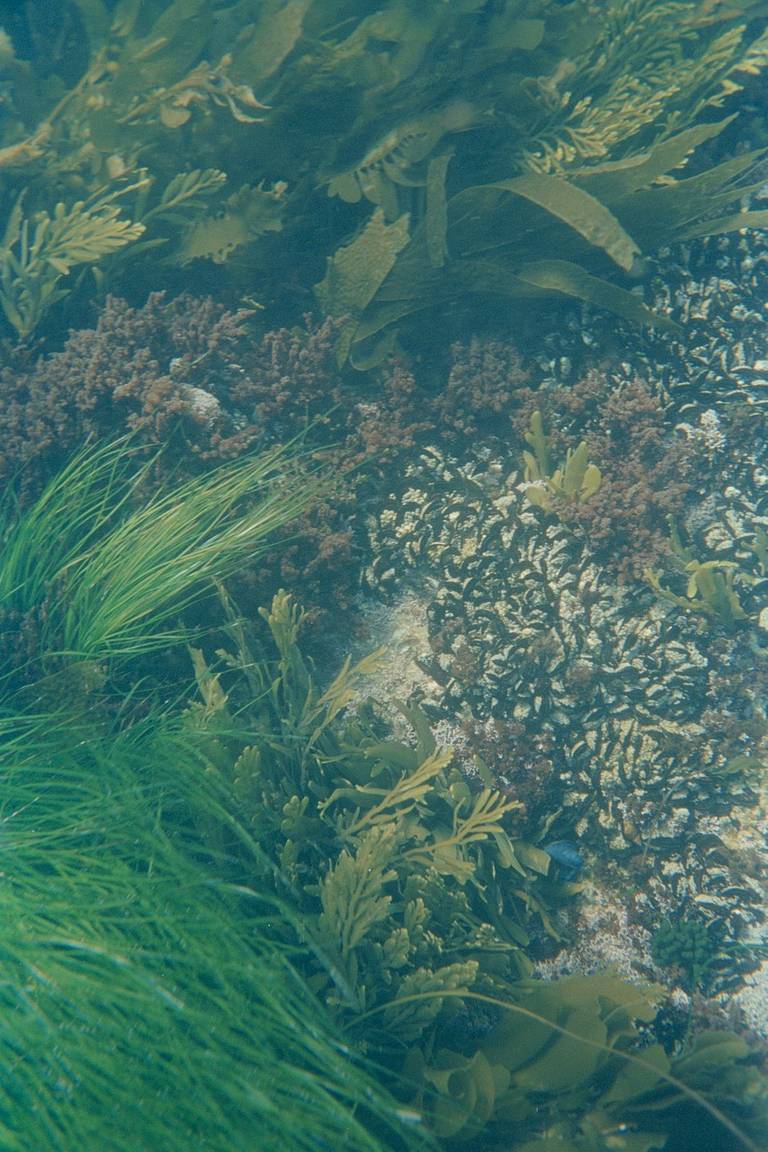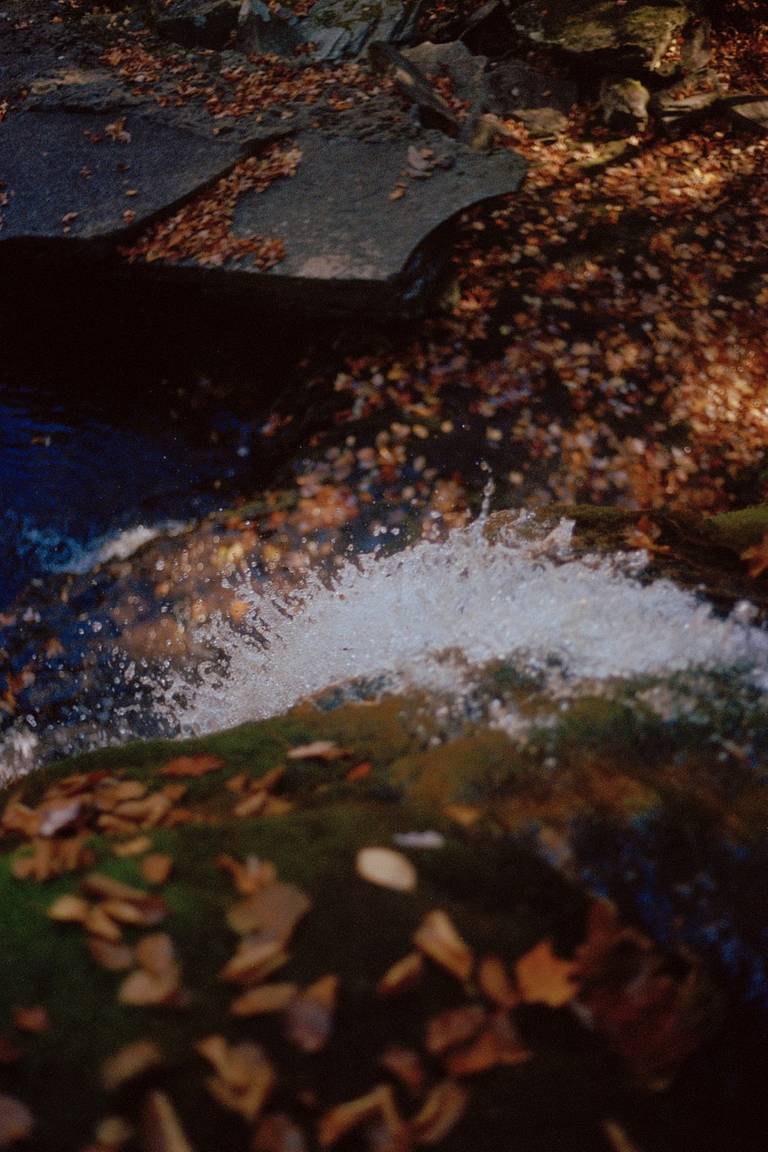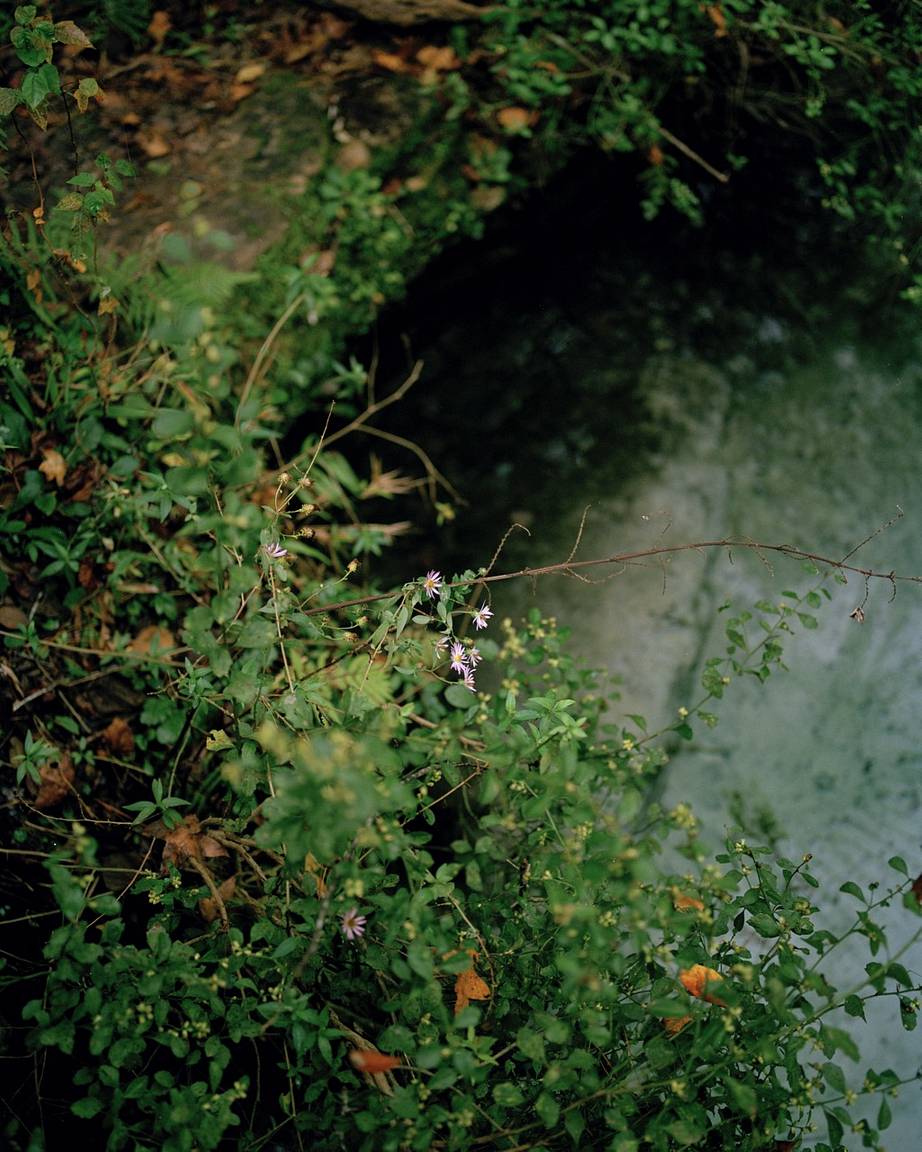Jonathan Lovett's "off the beaten path, there is a flowering" Examines How Queerness and Nature Coincide
2 4 Share TweetJonathan Lovett began his photographic journey back in 2017 with his LomoHome @jlovett, even making Newcomer of the Week. Thanks to that initial spark six years ago, he is now a professional fine arts photographer, having recently graduated from Parsons School of Design this past May.
"Nature is queer, queerness exists in countless species, from insects to large mammals, across plants and fungi, on every continent on the globe," said Jonathan in the statement for his year-long thesis project titled "off the beaten path, there is a flowering".
Coming back full-circle from his initial interview in 2017, the now Utah-based photographer sat down to tell all about his experience of reconnecting with nature through the queer lens. The work zones into the historical context of the natural world being used to justify homophobia and opposes this viewpoint by exploring nature as a space of innate queerness.
Hi Jonathan, welcome back to Lomography Magazine! Can you share a bit about where your photography journey has taken you since your "Newcomer of the Week" feature back in 2017?
Hello! Wow, yes! So much has happened since 2017.
I think when I was featured last on Lomography Magazine I was making pinhole images with the Diana Pinhole along with some polaroids. I have definitely moved to other types of image making. I now use a mix of 120 and 35 mm film and my two go-to cameras now are the Mamiya RZ67 for medium format and Nikon F3 for 35 mm.
My subject matter has also changed a lot since 2017. When I was in high school I was really just making images of my friends and things around me. There wasn't a ton of thought or any research going into the images that I was making. That has really changed. My images now are a result of a very concrete research practice and are informed by what I am reading. A lot of my reading is queer ecological theory and eco-criticism. My images now explore the natural world as a place of queerness and really dive into notions of queer ecological theory. I also decided to pursue photography as a career and decided to attend Parsons School of Design. Since attending Parsons I have moved to scanning and developing most of my film myself. I really like to be in control of the entire image making process.
I think one thing that hasn't changed since 2017 is how I use color. I am really interested in using color as a mode of world-building to create dream like imagery that is based in reality but also exists as it’s own space, separate from a concrete reality.
How did the initial idea for your thesis work come to be?
So I was making a lot of work that spoke on queerness in nature prior to making my thesis work. I was mostly photographing my queer friends and chosen family in natural spaces paired with images of the landscape itself. I realized that I was using other people to speak about a topic that felt extremely personal and that didn’t feel right. I did not want to speak for the entire queer community or even try to because that is not my place. I think my desire to connect with nature in a queer context was really a personal issue.
I was born to two moms and grew up hearing that my family was “unnatural” from my peers in school. When I started to figure out I was gay it was a really scary thing because I had received so much negativity surrounding my parents. I thought if I was unnatural and queerness was “against nature” that I did not have a space in the natural world, so I really distanced myself from that.
In my junior year of college I took a class called “Queer Ecologies” taught by Heather Davis and that really sparked something in me. I realized that nature is a space of queerness and all of this rhetoric I had heard growing up was a lie. I started making images that were self portraits and portraits of my partner in the nude. This kind of image making evolved into what I wanted to pursue for my thesis project.
The focus on my body and the body of my partner made a lot of sense to me because it became a lot more personal than the work I was making prior. I started to pair these nude portraits with figureless images that display the queerness of nature. For example, I photographed Garibaldis (a type of damselfish) which are all born female and at some point in their lives transition to male to reproduce. I also photographed fungi which are a great example of queerness in nature and do not follow heteronormative ideas of reproduction. An amazing example of this is schizophyllum commune, a fungi with an astonishing 23,000 biological sexes.
Can you tell us a bit about the process that went into making the project?
Yes! So I started working on this project the summer before thesis year started because I knew I wouldn’t be able to make a lot of work during east coast winter. Most of the actual making of this project happened between summer to the end of autumn. After that it was really about editing down. I think I had something like 200 images being considered for the final piece.
The portraits were the hardest images to make. It required a lot of vulnerability from myself and my partner. I was so grateful to my partner for being willing to be involved in a project like this. I couldn't have done it without them.
The figureless images were made all over the country over many months but were separate from the portraits. I had to figure out how to join the two types of images to make a cohesive end result. There was also a ton of research and looking at other images involved in the making of this project.
Some of my biggest influences in this project were “Undrowned” by Alexis Pauline Gumbs, “Gathering Moss'' by Robin Wall Kimmerer, “Annihilation” by Jeff VanderMeer, “Queer Ecologies” by Catriona Mortimer-Sandilands and Bruce Erickson, and the photographic works of David Benjamin Sherry, Mark McKnight, and Terri Weifenbach. While taking in these texts and images I was really figuring out how to translate these ideas into a visual language. I think some of the bigger ideas that went into this project were ideas of alternative modes of kinship, queerness in a very biological sense, and same-sex pairings in animals.
Did the direction of the project change at all throughout its year in making?
Yes and no. The core idea of the project did not change but a lot of the visual language and relationships between the images did.
I think the biggest hurdle that came up during the year was how to not create a visual hierarchy between the images. I really did not want the portraits to be more important than the images without figures. I wanted them to hold equal weight as that was pretty central to the ideas of the project. The fact that humans are not more important than other living beings on our planet. This took a long time, experimenting with image sizing, which images were placed next to each other, and in what order. I think at the end I got to a place I was happy with and really felt that all the images came together to make one whole.
Editing was also a huge part of this project and took a really long time. Most of the winter actually. It was really one of those “kill your darlings” moments because there were so many images that I really loved that were cut. It was about distancing myself from the work and really figuring out which images had a place and which images just didn't make sense, even if I loved them.
Why is it important for you to use photography in what you describe as "exploring nature as a space of queerness" as opposed to other visual mediums?
I actually went into the project thinking it was going to be a multi-media piece but as the project evolved it became clear that they wanted to just be photographs. I think this is for multiple reasons. The most important being that I really wanted the project to be based in reality. I wanted people to see these concrete examples of queerness in nature and have them be shown as they really occurred. This can really only be done through the use of lens based media.
I also really wanted the images to speak for themselves and be really strong. I didn't want any distracting elements that would take away from the images or any other medium to be used as a crutch. I wanted to make the images as good and true as they could possibly be.
On the other hand, I think investigations of nature as a queer space can happen across mediums and when all those languages come together it can be really powerful. I just think this iteration of this inquiry existed best as photographs with nothing else between the viewer and the subject.
Has your perspective on the natural world in relation to queerness shifted at all throughout making "off the beaten path, there is a flowering”?
I think I see differently now. I definitely notice more and am looking for different things. For example, when walking through the forest now I can’t help but think about trees sharing food through their roots, supporting other trees outside of their family groups and sometimes even outside of their species. How is this not an example of queerness in the natural world? These alternative modes of kinship and familial groups have always existed in the queer community. Forming our own families and finding support and kinship within our community is so important.
It turns out it is also important for trees! I think that is so wonderful. When I am in the ocean, I also think about how these fish and many other sea creatures have gender expressions that really lay outside of a cishet understanding of gender.
I think since making this project I really just see all these bits of nature that are queer, things that make my inner child so happy. Things that I couldn't even dream of when I came out and things that really make me feel like I belong and have a place within the natural world.
Do you plan on continuing your work on "off the beaten path, there is a flowering" any further?
Yes and no. I see this inquiry into queer ecology as being a life long endeavor that will take many different shapes and forms. I view this project as more of a chapter in that exploration, which I think is complete. I am starting to jot down ideas and questions for my next project but it is really still in the thinking phase.
If you could give one piece of advice to your younger self just starting out in photography, what would it be?
Keep going! Don't doubt yourself and follow what you love and work hard. Art is play, don’t forget that.
Where do you see yourself and your work going from here?
I’m not 100 percent sure! I think I’m very open to whatever happens. I think the most important thing is to just keep making the work and letting it flow. Right now I’m living in Salt Lake City, Utah which is a completely new place for me and I’m excited to see what kind of ideas living here will bring up. I am already pretty fascinated by the landscape as well as the Mormon culture versus the counter culture that co-exist here. I am still getting my bearings but I’m excited to see what inquires are to come.
Anything else you'd like to share?
I am just super grateful to be back! Feels like a full circle moment since having my feature in high school. So much has changed since then and it’s been fun to look back and see how everything played out. I still love Lomography products and my Diana Pinhole sits on my shelf all the time. Maybe I should take it for a spin again!
"Off the beaten path, there is a flowering" was produced through a year of research and making at Parsons School of Design and was exhibited at Anna-Maria and Stephen Kellen Gallery in New York City this past May.
If you're interested in keeping up with Jonathan and his work, check out his Instagram and website.
written by eloffreno on 2023-11-01 #culture #people #history #project #series #lgbtq



























2 Comments